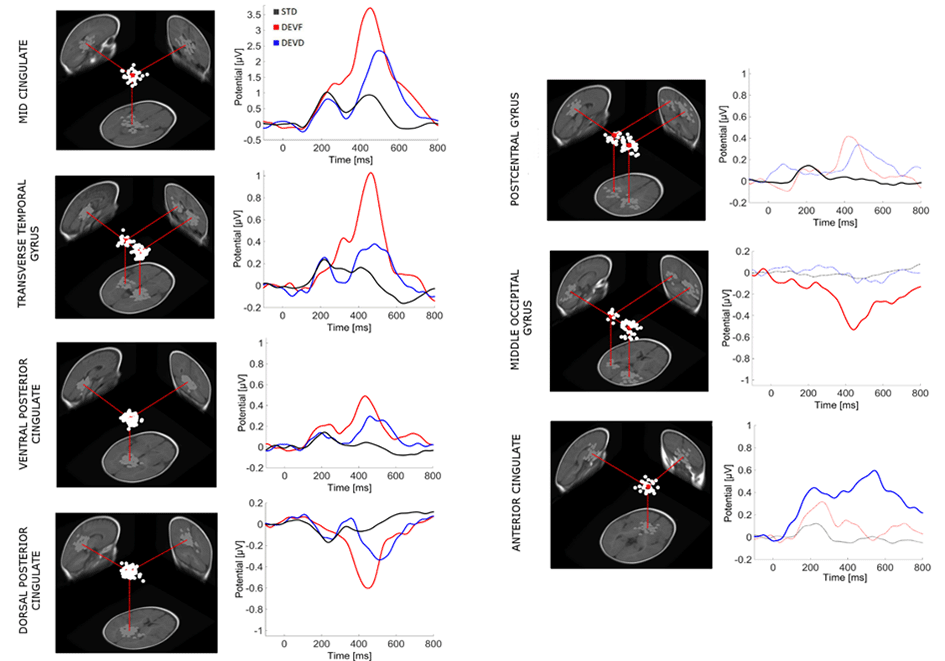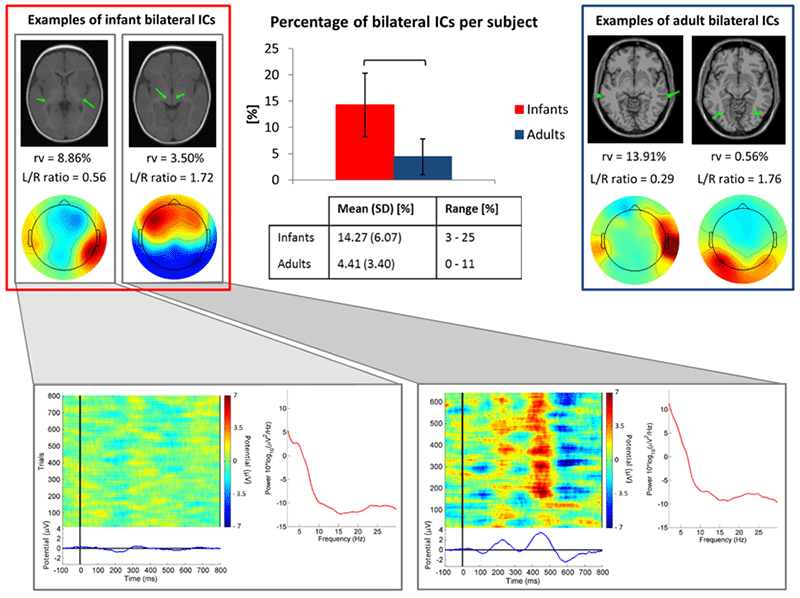The EEGLAB News #11
Caterina Piazza, Ph.D.
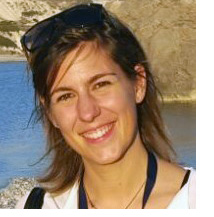
Post-doctoral Researcher in the Bioengineering Lab at the
Applied Technologies Research Area of IRCCS Medea, Italy
“I love the idea of working with signals coming from the body to get information about the health state of a subject and to study the functioning of different organs. I was especially attracted to the electroencephalogram (EEG), since it is the signal coming from the organ that controls most of the functions of our body, thought, memory, emotion, vision, motor skills, touch, breathing, temperature and every process that regulates our body.”
Dr. Caterina Piazza, postdoctoral researcher at IRCCS E. Medea in northern Italy, explains her fascination with EEG. She focuses on the development and application of biomedical signals in infants and children. She is drawn to this age group because of the possibility “to study the brain in a phase in which most of the human competencies are being acquired and developed.”
In her studies, Dr. Piazza strives to “peek” into developing brains to better understand how infant brains function. This topic is especially close to her heart, as she has two young daughters, both of whom have participated in various research projects.
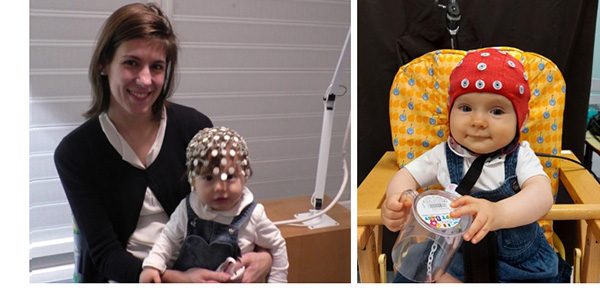 (Left: Dr. Piazza with her eldest daughter, Agnese, at 1 year old (she is now four years old);
Right: Her second daughter, Annalisa, at 8 months old (she is now 1 year old))
(Left: Dr. Piazza with her eldest daughter, Agnese, at 1 year old (she is now four years old);
Right: Her second daughter, Annalisa, at 8 months old (she is now 1 year old))
Another aim of Dr. Piazza’s research is to identify altered functionalities that are associated with the development of different pathological conditions such as autism spectrum disorders and language disorders. She believes that by characterizing these neurodevelopmental disorders, researchers can develop tools to help with early diagnosis. This could be a game changer – If neurodevelopmental disorders can be diagnosed early, scientists might be able to develop early interventions.
 Background. Born and raised in Lecco, a small city in Northern Italy at Lario lake, Dr. Piazza grew up surrounded by nature – “in a wonderful landscape between the lake and the mountain.” (Photo: Lario Lake, Italy)
Background. Born and raised in Lecco, a small city in Northern Italy at Lario lake, Dr. Piazza grew up surrounded by nature – “in a wonderful landscape between the lake and the mountain.” (Photo: Lario Lake, Italy)
In college, Dr. Piazza was attracted by the idea of applying math, physics and technological subjects to the human body to contribute to progress in medicine. After gaining her B.S. in Biomedical Engineering, she continued with a Master of Science Degree and then a Ph.D. in Bioengineering at Politecnico di Milano (in Italy), with a focus on Biomedical Signal Processing.
Dr. Piazza found that she especially loved working with infant EEG. But these studies came with some challenges. For instance, there is a high rate of subject exclusion, because some infants do not tolerate the EEG cap, others don’t complete the requested task, and sometimes the recorded data is too noisy to be analyzed. The EEG signal can become corrupted by many artifacts: “Infants freely move during the recordings. They ‘speak’, ‘sing”’ and cry, sometimes they need to suck their pacifier to be quieted, and so on.” Dr. Piazza continues: “It’s extremely hard to have good brain signals to work on. As a consequence, there are difficulties not only in applying advanced methods of analysis but in the data preprocessing, which becomes a really fundamental step to obtain reliable results.”
EEGLAB.
As Dr. Piazza attempted to address these challenges during her Ph.D. studies, her supervisor, Prof. AnnaMaria Bianchi, suggested that she use EEGLAB to work with her data. “From that moment, EEGLAB became a fundamental instrument in my work,” Dr. Piazza recalls. “I suddenly realized that EEGLAB is a very powerful instrument, and I started to follow the work of people that developed such a useful tool.”
Her search brought her to the Swartz Center for Computational Neuroscience (SCCN) in San Diego, California (USA). “I decided to ask Scott Makeig to host me in his lab. The importance and quality of the research of the SCCN lab is recognized by the whole neuroscientific community, and I felt extremely lucky when Scott agreed to my request.”
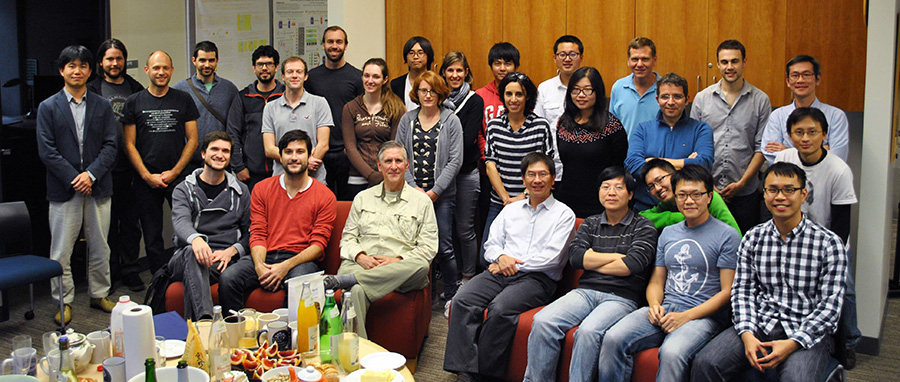
Celebrating SCCN's Birthday in 2015 (Dr. Piazza is back row middle, in black sweater)
Dr. Piazza visited SCCN from 2014-2015 as an EEG data analyst. “The period spent at SCCN allowed me to acquire important competencies to ‘decode’ the signals coming from the infant brain,” she recalls. “There were (and still are) very few studies that used ICA to investigate infant source resolved EEG data. Without the help of Scott and his collaborators, especially Makoto Miyakoshi and Zeynep Akalin Acar, it would have been very hard for me to do.” She continues: “It is very challenging to analyze infants’ data. Algorithms developed and tested with adult data often don’t work well when applied to infants. Infants’ data are noisier and have different characteristics from adult ones. They come from a developing brain, and interpretation of the results can be challenging. Moreover, to perform source localization, there is the necessity to use ad hoc head models that take into account the characteristic of the infant head.” (Photo: Dr. Piazza with other researchers and lab members at SCCN at UC San Diego in San Diego, California)
She found her time at SCCN extremely beneficial. “Thanks to Scott Makeig and his collaborators, I successfully analyzed a dataset recorded in six-month-old typically developing infants, investigating source-resolved auditory event related potentials (ERPs) and identifying ERP cortical generators” (Piazza et al., 2016, Figure 1, below). The same methods of analysis were successively used to deepen knowledge about the functional organization of the infant brain.
Figure 1 – Estimated cortical locations of independent component (IC) clusters of effective sources across subjects that contribute the most to the scalp grand-mean ERP. Specifically for each source cluster are represented: (1) the three-dimensional equivalent dipole model locations of the ICs contributing to the cluster. Dipole projections are shown in the sagittal, coronal and transverse planes of the MNI infant template brain model. Cluster dipole centroids are shown in red. (2) Grand-average ERP waveforms. |
|---|
Another more recent work, done in collaboration with SCCN, compared source-resolved infant brain EEG with the EEG produced by the adult brain, assessing bilaterally symmetric synchronous activity between the two hemispheres. “The results of this work,” Dr. Piazza explains enthusiastically, “support the hypothesis that more strongly unilateral and likely more functionally specialized unihemispheric cortical field activities are concomitants of brain maturation.” (Piazza et al., 2020, Figure 2, below)
Figure 2.- Bar graph showing the percentage of ICs judged to be bilateral per subject. The group difference was significant (p < .05 by independent sample t-test). In the table, mean values, standard deviations (SD) and ranges (min-max) of the percentage of bilateral ICs for each group are shown. Top left and right boxes. Example bilateral infant (left) and adult (right) IC scalp maps and dipole models. Bottom. Scalp maps, power spectra, ERP-image plots, and mean ERPs for the two example infant bilateral ICs. |
|---|
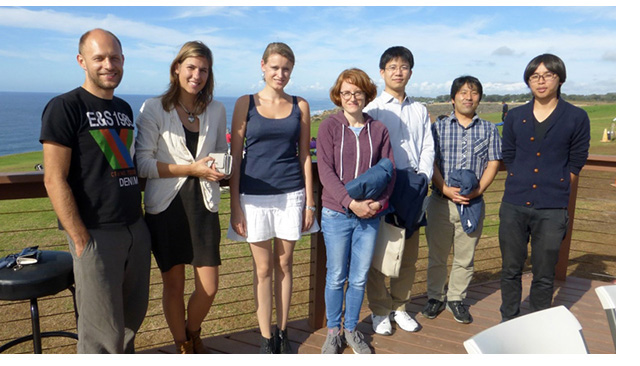 EEGLAB has become a fundamental instrument in Dr. Piazza’s work. She uses the tool any time she needs to analyze EEG data, usually combining EEGLAB command line functions in her own scripts. Dr. Piazza has even developed an EEGLAB plug-in – the FitTwoDipoles plug-in – in collaboration with Makoto Miyakoshi. The plug-in identifies EEG ICs with bilaterally near-symmetric scalp projections and fit bilateral dipoles wherever appropriate
(Piazza et al., 2016). (Photo: Dr. Piazza joins SCCN lab members for a gathering overlooking the Pacific Ocean)
EEGLAB has become a fundamental instrument in Dr. Piazza’s work. She uses the tool any time she needs to analyze EEG data, usually combining EEGLAB command line functions in her own scripts. Dr. Piazza has even developed an EEGLAB plug-in – the FitTwoDipoles plug-in – in collaboration with Makoto Miyakoshi. The plug-in identifies EEG ICs with bilaterally near-symmetric scalp projections and fit bilateral dipoles wherever appropriate
(Piazza et al., 2016). (Photo: Dr. Piazza joins SCCN lab members for a gathering overlooking the Pacific Ocean)
Dr. Piazza’s time at SCCN left an indelible mark - both professionally and socially: “It offered the occasion to know new people, new cultures and new places. I really have wonderful memories of the months I spent at SCCN. And San Diego represent a place that has remained in my heart like few others. I hope to have the opportunity to visit again with my family.”
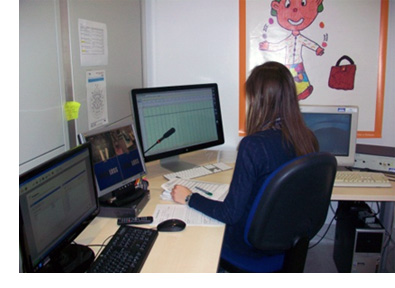 The Future.
Dr. Piazza currently works as a postdoctoral researcher at the Bioengineering Lab of the Scientific Institute E. Medea. The Institute is equipped with a laboratory specifically dedicated to the recording of EEG in infants and young children, the BABYLAB. She continues to live in Lecco, Italy, with her husband and two daughters. (Photo: Dr. Piazza working at the BABYLAB)
The Future.
Dr. Piazza currently works as a postdoctoral researcher at the Bioengineering Lab of the Scientific Institute E. Medea. The Institute is equipped with a laboratory specifically dedicated to the recording of EEG in infants and young children, the BABYLAB. She continues to live in Lecco, Italy, with her husband and two daughters. (Photo: Dr. Piazza working at the BABYLAB)
Her immediate focus is on a recently won grant funded by the Italian Ministry of Health: “A multi-domain approach for the characterization and early diagnosis of neurodevelopmental disorder.” The aim of the project is to integrate infant EEG data with genetic, clinical and environmental data in order to characterize neurodevelopmental disorders, such as autism spectrum disorders and language disorders. She also proposes a tool, based on machine learning algorithms, for supporting early diagnosis.
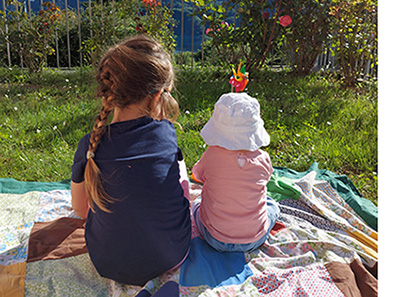 “What I really hope for the future,” she shares, “is to see the results of my research become useful in clinical practice. My current project is a first little step in this direction. Increasing knowledge about the infant brain can help in the early identification of an atypical development, allowing the implementation of ad hoc early interventions.” (Photo: Dr. Piazza’s daughters: 'My two favorite little scientists')
“What I really hope for the future,” she shares, “is to see the results of my research become useful in clinical practice. My current project is a first little step in this direction. Increasing knowledge about the infant brain can help in the early identification of an atypical development, allowing the implementation of ad hoc early interventions.” (Photo: Dr. Piazza’s daughters: 'My two favorite little scientists')
As Dr. Piazza ponders her research journey so far – her vast progress as well as the challenges she has encountered in her studies of the infant brain – she concludes, “It’s challenging, but this makes the satisfaction double when you succeed and you are finally able to look into their developing brains.”
R. Weistrop, February 2022
_______________________
